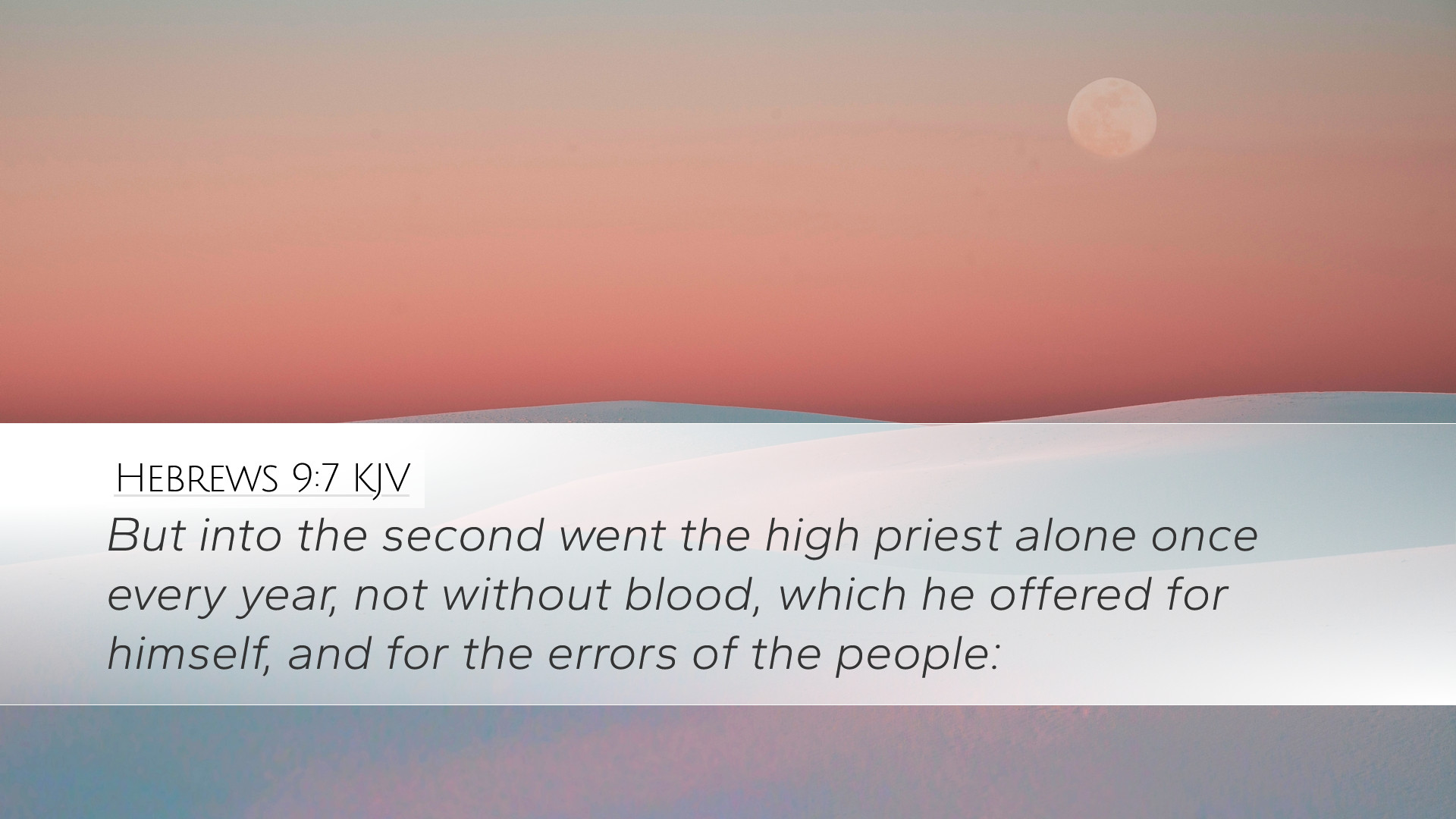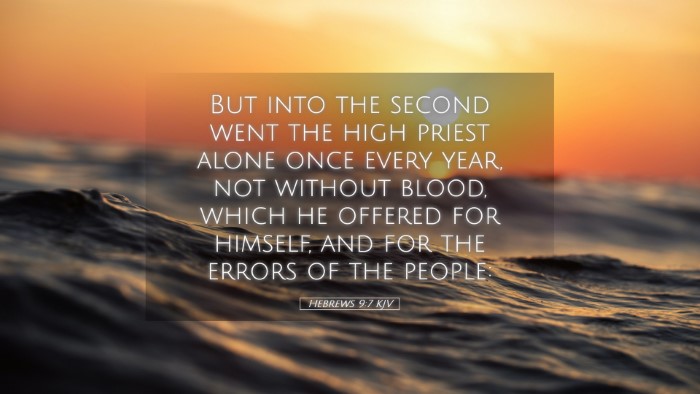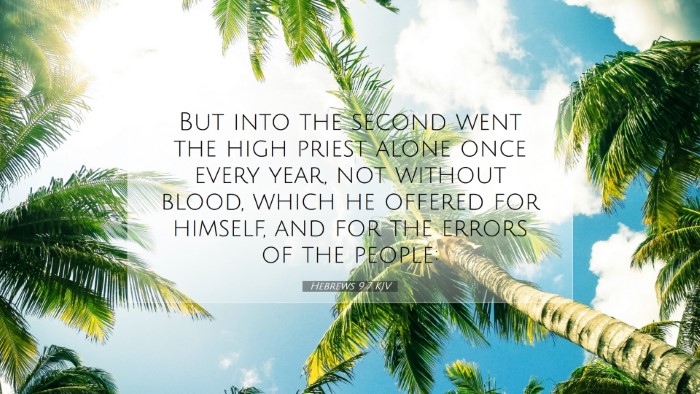Commentary on Hebrews 9:7
Hebrews 9:7 states, "But into the second went the high priest alone once every year, not without blood, which he offered for himself, and for the errors of the people."
Summary of the Verse
This verse pertains to the sacrificial system of the Old Testament, particularly the Day of Atonement. The author of Hebrews emphasizes the exclusivity of the high priest's access to the Holy of Holies and the essentiality of blood in the atonement process.
Exegesis and Interpretation
The verse is rich in theological significance, and several commentators provide insights that can aid in understanding its implications.
Matthew Henry's Commentary
Matthew Henry outlines the solemnity of the high priest's annual entry into the Holy of Holies, which was a privilege not shared by any others. He emphasizes:
- Exclusivity of the High Priest: Only the high priest had access to the inner sanctum, symbolizing the isolation of sin and the need for a mediator.
- Use of Blood: The high priest was required to enter with blood, highlighting the intrinsic link between life and atonement. Blood became a necessary element for the purification of sin.
- Personal and Communal Atonement: This act served dual purposes—covering his own sins and those of the people, showcasing the high priest’s role as a mediator.
Albert Barnes' Commentary
Barnes focuses on the theological implications of this rite. He remarks:
- Temporal Nature of Atonement: The annual nature of this act indicates that the atonement was temporary, necessitating ongoing sacrifices until the final atonement through Christ.
- Significance of the 'Errors': The term 'errors' possibly refers to unintentional sins, underscoring the pervasive need for divine grace in the face of human fallibility.
- Foreshadowing of Christ: Barnes makes the link that this yearly ritual foreshadows the ultimate sacrifice of Christ, reinforcing that Christ's offering was once and for all.
Adam Clarke's Commentary
Clarke provides a detailed analysis of the cultural and historical context of the high priest's duties. His insights include:
- The High Priest's Role: Clarke notes that the high priest was a central figure in Jewish worship, serving as the spiritual leader and mediator.
- The Ritual Significance: The once-a-year entry into the Holy of Holies reflects both the holiness of God and the seriousness of sin, emphasizing that unconfessed sin barred access to God's presence.
- Christ as Our High Priest: He draws parallels between the ritual duties of the Old Testament and Christ's redemptive work, asserting that Jesus fulfills and surpasses the sacrificial system.
Theological Themes
Three significant themes arise from Hebrews 9:7 that resonate with theological inquiry:
- Access to God: The high priest's limited access serves to emphasize the holiness of God and the need for mediation in approaching Him.
- Blood Sacrifice: The necessity of blood underscores the gravity of sin and the required payment for transgressions. Atonement through blood becomes a unifying theme throughout Scripture.
- Christological Fulfillment: The verse foreshadows the New Covenant in Christ, marking a transition from the old sacrificial system to a new era of grace through faith in Jesus.
Conclusion
Hebrews 9:7 serves not merely as a historical reflection of Jewish religious practice but as a profound theological statement about sin, atonement, and the unifying role of Christ as mediator. By exploring insights from notable public domain commentaries, pastors, students, theologians, and scholars can delve deeper into the richness of this text, understanding its foundational role within the broader canon of Scripture.


